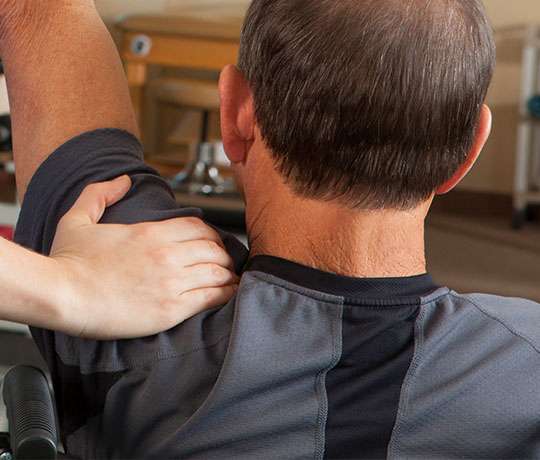Objectives:
To evaluate the prevalence of post-traumatic stress disorder (PTSD) symptoms in individuals who are further removed from injury (up to 3 years) and to identify injury-specific characteristics that are associated with an increased risk for persistent PTSD symptoms.
Design:
Cross-sectional, retrospective cohort.
Setting:
Level I trauma center.
Patients/Participants:
Two hundred forty-three patients operatively treated for orthopaedic trauma between March 2017 through June 2018.
Intervention:
Orthopaedic trauma requiring operative intervention.
Main Outcome Measurements:
The primary outcome was score on the PTSD Checklist for the DSM-5 (PCL-5) survey. A score of 31 or higher was considered concerning for PTSD.
Results:
Forty-nine of 239 respondents (20.5%) scored positive for PTSD. Multivariate analysis demonstrated an increased risk of PTSD for patients with a history of smoking and those who required delayed reoperation (greater than 90 days postoperative). White race and low-energy mechanisms of injury were associated with decreased risk of PTSD. Fracture locations were not associated with a higher likelihood of PTSD.
Conclusions:
The prevalence of PTSD symptoms in patients up to 3 years after surgery remains higher than the estimated prevalence of PTSD in the general US population. It is similar to previously documented rates of PTSD for patients less than 1 year after injury. Long-term complication requiring reoperation was associated with an increased risk of persistent PTSD symptoms. Orthopaedic providers should be mindful of PTSD symptoms not only in the immediate postoperative period but throughout the treatment course particularly for those with identified PTSD risk factors.
Level of Evidence:
Prognostic Level III. See Instructions for Authors for a complete description of levels of evidence.
Although most commonly associated with military combat, post-traumatic stress disorder (PTSD) can occur in civilians, too — and with consequences that are just as serious, according to a new review article in the Journal of the American Academy of Orthopaedic Surgeons (JAAOS). PTSD is a type of anxiety disorder that occurs after a person experiences a traumatic event involving physical injury, and occurs in 20 to 51 percent of patients with an orthopaedic injury.
“PTSD occurs with a significant frequency in civilian patients who have sustained an orthopaedic trauma, and it can hinder their emotional, physical and functional recovery following orthopaedic treatment,” said Daniel Aaron, MD, a clinical instructor in the department of orthopaedics at Brown University in Providence, R.I.
Many types of accidents can cause PTSD, including car or motorcycle accidents, gunshot wounds, vehicle-pedestrian accidents and falls from height, among many others.
“Generally, higher-energy mechanisms are most commonly associated with PTSD, but no specific type of fracture or injury has been identified,” Dr. Aaron said. “Basically, any type of muscuolskeletal injury that results from significant trauma may be associated with PTSD.”
PTSD can have a significant impact on a patient’s ability to perform simple, daily chores, and can slow the rehabilitation process, even affecting how the patient experiences pain and perceives his or her recovery.
“The development of PTSD adversely affects the ability of the patient to recover and may specifically compromise physical rehabilitation and patient satisfaction following orthopaedic treatment,” Dr. Aaron said. “Without effective treatment, PTSD can hinder activities of daily living, such as bathing, eating, paying bills, shopping, laundry and other household chores. Patients with PTSD also may be delayed in returning to work.”
A diagnosis of PTSD relies on the presence of specific behaviors or symptoms, including:
- re-experiencing the traumatic event, including nightmares, flashbacks and intrusive memories;
- avoiding situations reminiscent of the original trauma, reluctance to talk or think about the original trauma, or feeling emotionally “numb” about the event; and,
- anger, irritability, difficulty concentrating, insomnia and/or an increased startle response.
In addition, the symptoms must have occurred for at least one month and they must be severe enough to cause a noticeable change in normal behavior.
PTSD can occur in any person at any age, but Dr. Aaron said several risk factors make PTSD more likely to occur, including:
- use of drugs or alcohol;
- less education;
- socioeconomic status;
- young age or
- female gender.
One study also suggests people of Hispanic origin may be at greater risk for PTSD, he added.
“Although no single prevention protocol has been described, therapy with a psychiatrist or psychologist may help, as well as the use of certain medications, including anti-depressants and anti-anxiety medications,” Dr. Aaron said.
Recognizing the symptoms of PTSD early offers the best chance of effective prevention. Orthopaedic surgeons can improve patient outcomes by knowing which patients are at risk of developing PTSD and initiating prevention strategies, noted Dr. Aaron. Some studies indicate that when PTSD is identified early, progression of the condition may be prevented through use of medications, he added.
“Identifying at-risk patients is an important first step in preventing the ill effects of PTSD,” he said. Many orthopaedic surgeons may not recognize the signs and symptoms of PTSD, and remain unaware of prevention and treatment strategies. As a result, recovery can be delayed.
In addition to understanding and evaluating for the risk factors of PTSD, asking patients questions about the emotional and physical problems they are experiencing as a result of their injury can also help physicians determine if a patient is at risk for developing the condition.
Treatment of PTSD begins with referral to a psychiatric professional, who may prescribe medication and implement a behavioral therapy program to help deal with the traumatic event and its effects.
Although PTSD clearly impacts recovery in patients with orthopaedic injury, currently there are no studies that directly link treatment or resolution of PTSD with orthopaedic improvement, and many of the options for treatment of PTSD are in the experimental stage, Dr. Aaron noted.
“In addition to continuing to look at treatment options and their effects, we need to study the effectiveness of prevention strategies,” he said. “And we also need to look at whether physical and functional outcomes do indeed improve as the emotional symptoms of PTSD are treated.”
Post-Traumatic Stress Disorder After Orthopaedic Trauma
Post-traumatic stress disorder (PTSD) is a mental illness that can occur after injury. It was first described among soldiers who had been in combat and experienced severe emotional or physical trauma. It is part of the body’s response to a horrible situation.
What is Post-Traumatic Stress?
If you are confronted with death or serious injury, your body responds in several ways. For example, you may feel a rush of emotions or energy. If the threat is sudden and overwhelming, you may feel fear, helplessness, or horror. Later, you may be unable to forget the sights, sounds, and feelings of the event. These memories may make it difficult for you to function in social or work settings.
People who develop PTSD respond in similar ways. These responses, or symptoms, are used by doctors to help diagnose the condition.
- You may have recurring memories, dreams, or feelings about the event. These are called intrusion symptoms. For example, you may have nightmares about the injury or get upset when talking about the event.
- You may go out of your way to avoid certain activities, places, or thoughts related to the event. You may say “no one understands how I feel” or push people away who try to help. These are called avoidance symptoms.
- You may become irritable and suddenly angry, or have difficulty concentrating or sleeping. An unexpected noise may make you jump, or you may feel the need to be constantly alert. These are called arousal symptoms.
A person must have all three types of symptoms to be diagnosed with PTSD.
PTSD in Orthopaedic Trauma
A study found that many patients who experienced an orthopaedic trauma, such as a gunshot wound or a fracture from a motor vehicle accident, developed symptoms of PTSD. In some cases, even though the injury healed properly, the patient continued to experience emotional problems.
Of the nearly 600 patients in the study, more than half had symptoms of PTSD. Among patients injured in vehicle crashes, 57 percent developed symptoms of PTSD. A person who was walking and struck by a car had an even higher risk of developing symptoms of PTSD. Two out of three people involved in vehicle-pedestrian collisions had symptoms of PTSD.
Post-traumatic stress disorder may not be evident right after the accident, but symptoms may develop over time. In this study, patients with more recent injuries were less likely to have symptoms of PTSD than those who had been injured some time ago.
Talk to Your Doctor
A serious injury can have a negative impact on your quality of life. For example, if your leg is broken in an automobile accident, you will experience pain and may need surgery to repair the leg. The orthopaedic surgeon may have to put a rod, pin, or plate in your leg to assist healing. For a while, you will probably have to use a walking aid such as crutches. It may be some time before you can resume sports and other activities.
In most cases, these physical effects gradually diminish. However, you and your doctor should be aware of, and address, other conditions that could affect your recovery. Your mental attitude is just as important to the final outcome as your physical response.
If you are having difficulty coping with the emotional effects of your injury, talk to your orthopaedic surgeon. In some cases, you may need a referral to a mental health professional. Other times, you may find it comforting just to know that there’s someone you can talk to about your feelings and response to the accident.
Last reviewed: March 2003
AAOS does not endorse any treatments, procedures, products, or physicians referenced herein. This information is provided as an educational service and is not intended to serve as medical advice. Anyone seeking specific orthopaedic advice or assistance should consult his or her orthopaedic surgeon, or locate one in your area through the AAOS “Find an Orthopaedist” program on this website.



